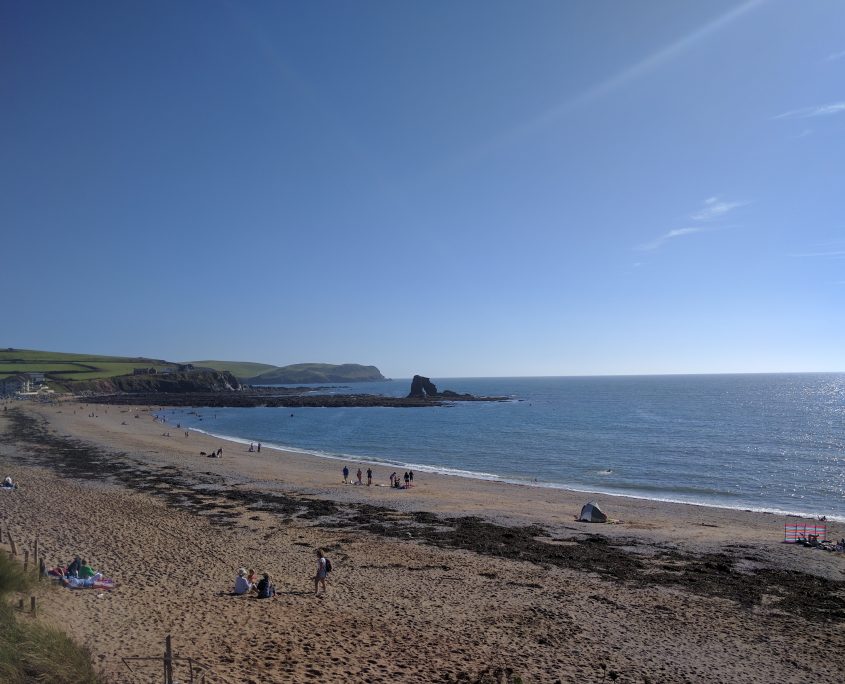Time to mix it up the locations and head down to the usual stomping ground of Bantham. Grockle season has passed – the beach is empty. There’s a decent four foot swell running (more than I wanted / expected) with a few of the local surfers out in the light onshore on long boards at high tide. Due to the way the wind bends around the headland, it’s quite glassy.
Bantham is a lot shallower, and has various sandbars to avoid and this was a much more technical expedition.
Things I learned during my first Hydrofoil wave session:
- Don’t let your board get too far away from you, if a wave hits the foil it runs away from you faster than you could ever imagine!
- Be very conscious of other water users. A hydrofoil is probably the most dangerous thing you can use in the water, specially in surf.
- Seaweed is your enemy, the spaghetti type round the mast is particularly irritating. I had more crashes due to seaweed than anything else during this session.
- If a wave is coming and you are going to get washed, hold the board by the nose and body drag over it. Don’t just let it smash you. The surface area of the mast side on to the wave direction has a lot of drag.
- Riding over the wave whilst flying the board is pretty easy as it just slices through, you have to remember to dip the board again as you ride over the back of the wave to stop the wing popping out and the cavititaion crash.
- Riding over white water is fine, but it makes the board a little unstable. It’s a weird fizzy feeling through the wing.
- Widen up your stance to get as much fore and aft control as possible.
I hacked out the back once I got some confidence and towed into a four of five pretty big waves with speed, the feeling is pretty intense. You get a huge speed boost and lift from the wave and you have to get on your front foot hard! It would have been preferable to try it in smaller swell for my first session, it was pretty intimidating. I was pulling back out of the wave upwind before they were breaking so I didn’t get rumbled.
Jibing is still somewhat of a mystery. From my attempts so far it may be better to do it on the wing than with the board on the water, again i think speed will be my friend.


